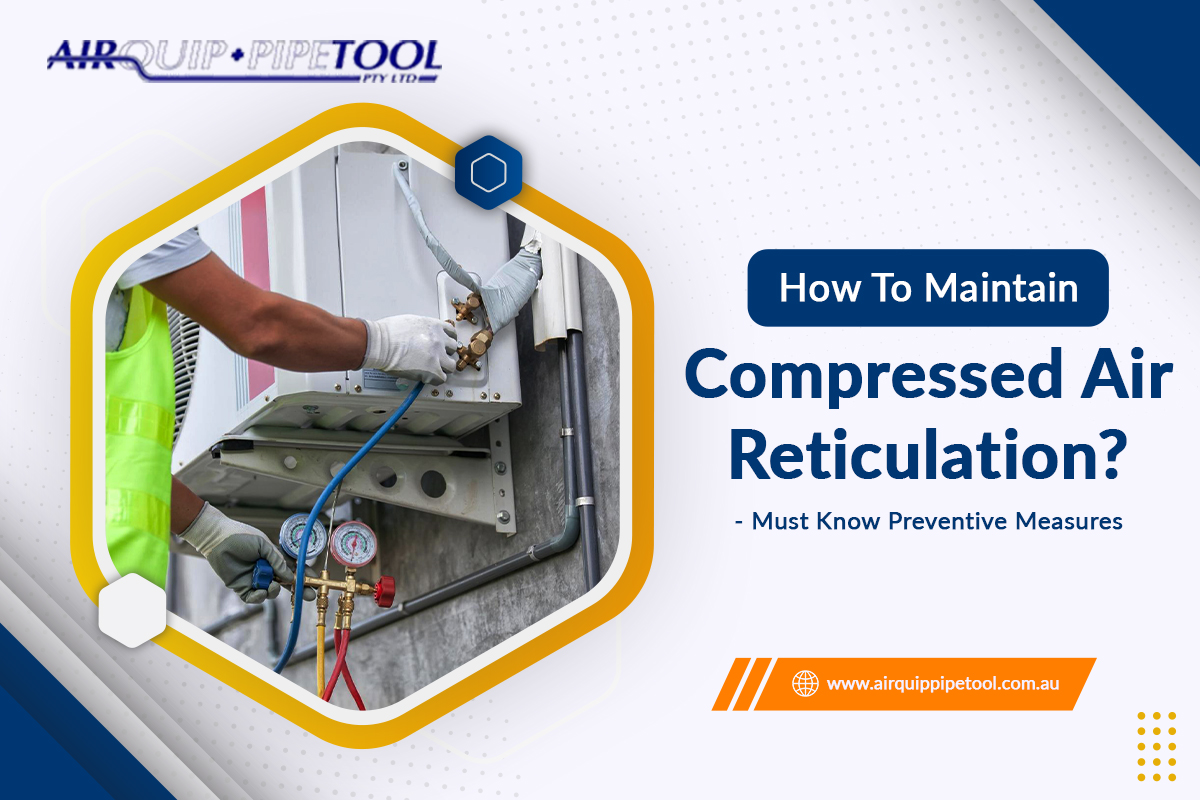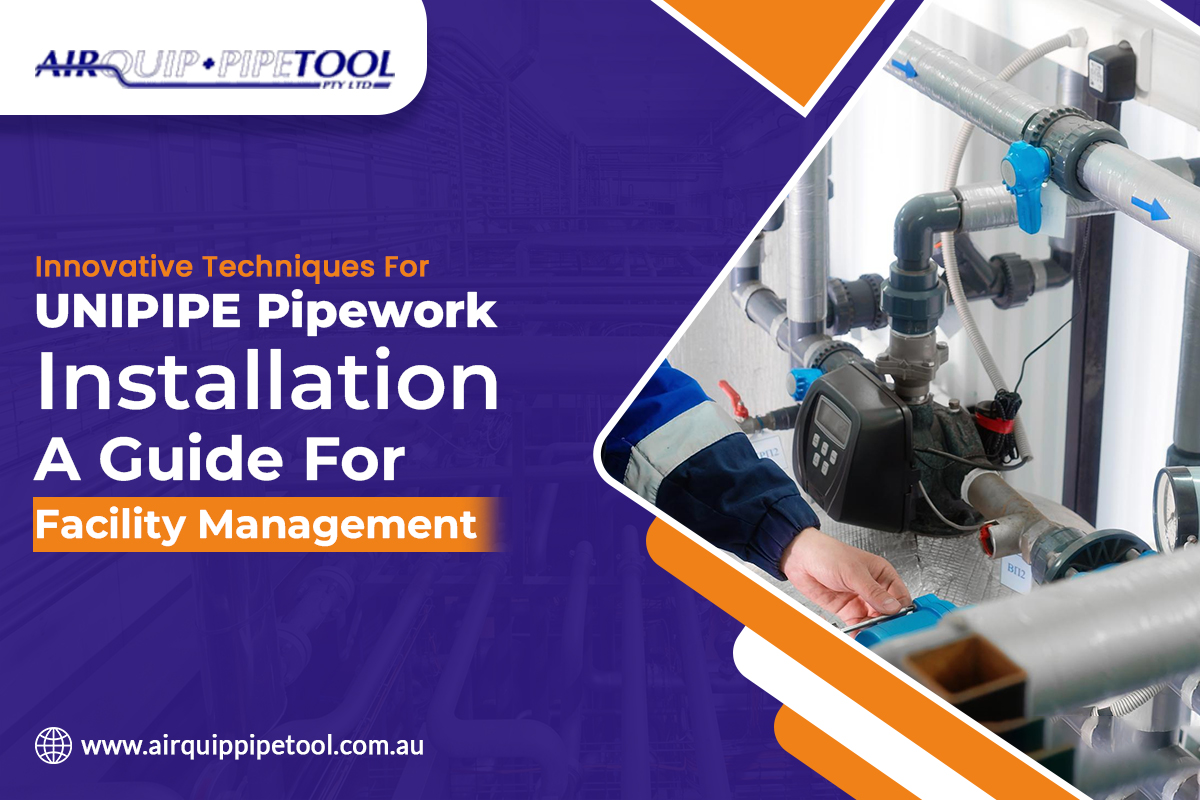- by airquippipetool
- . 2 May 2025
In industrial and workshop environments, the need for reliable, efficient gas supply systems is critical. Whether it’s for welding and fabrication, food and beverage production, pharmaceutical manufacturing, or workshop services, gases like argon, helium, carbon dioxide, nitrogen, and even breathing air are essential. However, many businesses still rely on traditional pressurised gas cylinders at the point of use. While this method has been the norm for many years, an increasing number of companies are discovering the benefits of reticulated gas pipework systems—a more reliable, safer, and efficient alternative.
At Airquip and Pipetool, we specialise in providing custom-designed inert gas distribution systems for businesses across a wide range of industries, from fabrication and welding shops to breweries, distilleries, pharmaceuticals, and even abattoirs. In this post, we’ll explore the key advantages of transitioning to a reticulated gas and breathing air distribution system versus relying on gas cylinders, and why this change could benefit your business.
Managing pressurised gas cylinders can be cumbersome and risky. The manual handling of heavy, pressurised cylinders is not only labour-intensive, but also comes with significant safety concerns. There’s the risk of improper storage, accidental damage, or even an uncontrolled release of gas, all of which could cause wastage, accidents, or injury in the workplace.
By installing a reticulated pipework system, all the gas is securely contained within the infrastructure, eliminating the need for constant handling of cylinders. This greatly enhances workplace safety. Workers no longer need to worry about moving heavy cylinders around, reducing the chance of mishaps, and freeing up valuable floor space. It’s a safer and more efficient approach, particularly for high-usage applications like welding, food production lines, and breathing air systems.
A major advantage of a reticulated gas system is the ability to create a centralised resupply zone. This allows businesses to store large quantities of gases like argon, helium, nitrogen, and carbon dioxide in a single, easily accessible location. Instead of relying on frequent deliveries of gas cylinders and managing multiple gas muster zones, a single system reduces logistics and makes it far easier to manage your gas needs.
For industries with high consumption—like welding and fabrication shops, bottling lines, or food and beverage production—this centralised setup means that you’ll have a continuous, on-demand supply of gas piped directly to where it’s needed. The result? Less downtime, fewer disruptions, and more consistent production. Not to mention, bulk purchasing typically offers cost savings, and businesses can better plan their budgets without worrying about the fluctuating costs of individual cylinders.
A reticulated pipework system offers unparalleled convenience. When gases are supplied through a central distribution system, workers no longer need to waste time changing out cylinders or dealing with the logistics of cylinder delivery. This is especially crucial in high-demand environments like pharmaceutical manufacturing, breweries, or distilleries, where consistent gas supply is vital for maintaining production efficiency.
Additionally, these systems can be customized to include automatic regulators and flow meters, allowing for precise control of gas supply to each workstation or machine. This precision can improve the quality of work, reduce waste, and ensure that gas usage is optimised—whether it’s for inert gas welding, breathing air systems, or CO2 for food processing.
When using cylinders, tracking gas usage can be a hassle. With a reticulated gas system, it’s much easier to monitor and control gas consumption. Flow meters, usage sensors, and centralised control systems allow you to track real-time gas usage, providing insights into how much gas is being consumed at each workstation or in each part of your facility.
This data can help you optimise operations, identify areas of inefficiency, and better plan your gas procurement needs. For businesses with multiple gas types (such as nitrogen for bottling lines and shield/purge gases for welding stations), this data is invaluable in ensuring that gas usage is fully accounted for, and that resources are used as efficiently as possible.
Gas cylinders are expensive and portable, which can make them a target for theft or misuse. Without proper storage and tracking systems in place, businesses risk losing valuable resources. Reticulated gas systems, however, are securely installed within your building’s infrastructure, making it nearly impossible for unauthorised individuals to access the gas supply.
With a centralised, locked system, gas is only accessible to authorised personnel, making it a much safer option. Additionally, monitoring and inventory management become much easier, reducing the chances of loss or misplacement. This is particularly critical for high-value gases like helium.
While the upfront cost of installing a reticulated gas distribution system may seem higher than simply using cylinders, the long-term savings and efficiency gains can make it a more cost-effective solution. Bulk gas purchasing, reduced delivery fees, and a lower need for cylinder handling and management can result in significant savings over time.
Furthermore, the system’s scalability allows it to grow alongside your business. Whether you’re expanding into a new production line, adding more workstations, or increasing your need for specific gases, the reticulated system can be easily adapted without the need for costly modifications. This flexibility is particularly valuable for businesses in industries like breweries, wineries, and manufacturing, where growth and changes in production volumes are common.
Airquip and Pipetool provide gas distribution systems tailored to a variety of industries. Whether you’re running a high-volume welding operation, managing a pharmaceutical manufacturing facility, or overseeing a food processing plant, we design and install gas distribution systems that meet your specific needs.
For food and beverage industries such as breweries, distilleries, and wineries, the system ensures that gases like CO2, nitrogen, and oxygen are delivered consistently to maintain quality and preserve the integrity of the product. In workshop services like tyre shops or abattoirs, reticulated gas systems help maintain a reliable and safe environment for operations that depend on gases for tools, equipment, and employee safety.
Investing in a reticulated inert gas and breathing air distribution system can revolutionise the way your business manages gas supply. Whether you’re in welding, food production, pharmaceuticals, or workshop services, transitioning to a centralised pipework system offers enhanced safety, reduced downtime, cost savings, and greater efficiency.
At Airquip and Pipetool, we specialize in designing and installing these reticulated pipework systems for a wide range of industries. Our solutions are tailored to meet the unique needs of your business, helping you improve operational efficiency and reduce costs while ensuring your workers are safe and your production processes run smoothly.
If you’re ready to move beyond traditional cylinders and invest in a more reliable, efficient, and scalable gas distribution system, get in touch with us today to learn more about how we can help transform your operations.
 " alt="">
" alt="">
 " alt="">
" alt="">
How To Maintain Compressed Air Reticulation? (Must Know Preventive Measures)
 " alt="">
" alt="">
Innovative Techniques For UNIPIPE Pipework Installation: A Guide For Facility Management!

The compressor overheating is one of the severe issues that causes sudden failures and severe risks. But what exactly causes the compressor to overheat? External circumstances, internal reasons, or occasionally […]

Maintaining your compressed air reticulation system is essential to preventing contamination, pressure dips, and costly downtime. Expert compressed air pipework service is needed to prevent damage to your system’s pipework. This is a […]

For compressed air and auxiliary pipeline systems, modern pipework installation is suitable. The precisely driven process assures efficiency, durability, ease of integration across industries, and more. One such modern system […]
Copyright © 2025 airquippipetool | All rights reserved